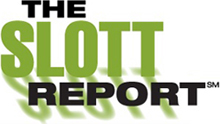Many individuals are advised by their attorneys to set up a trust. There are a lot of good reasons to have a trust. But you really have to think twice before naming a trust as the beneficiary of an IRA. Read that sentence again - think twice before naming a trust as the beneficiary of an IRA. When that happens, who is the beneficiary of the IRA? It is the trust.
 Why is this important? Let’s say you have three children. They are all responsible adults; they even have jobs and their own homes. You could name them as the equal beneficiaries of your IRA. At your death, they would inherit the IRA and timely split it into three separate inherited IRAs. They would each be able to take required distributions (RMDs) from their own inherited IRA using their own age.
Why is this important? Let’s say you have three children. They are all responsible adults; they even have jobs and their own homes. You could name them as the equal beneficiaries of your IRA. At your death, they would inherit the IRA and timely split it into three separate inherited IRAs. They would each be able to take required distributions (RMDs) from their own inherited IRA using their own age.
Contrast this with naming a qualifying trust as the beneficiary of the IRA. Your children are the beneficiaries of the trust. You now have only one beneficiary of your IRA - the trust. At your death only one inherited IRA is set up for the trust. When it comes time to take an RMD, it will be calculated on the age of the oldest trust beneficiary - the oldest child - since it is a qualifying trust. The RMD is paid from the inherited IRA to the one beneficiary - the trust. The trustee of the trust will then make distributions to the children in accordance with the terms of the trust. Your children will likely be prevented from setting up their own inherited IRAs. They will not control the investments of the inherited IRA. They cannot take distributions whenever they want. They are not the IRA beneficiaries. The trust is.
Let’s change the example a little. The trust will split into three sub-trusts, one for each child. That should change things, right? Maybe. If the master trust is named as the sole beneficiary, nothing changes. If the sub-trusts are named as the IRA beneficiaries, then each child can use his own life expectancy. Nothing else changes.
Let’s change the example again. The trust says collect all your assets, then distribute them and terminate the trust. You still have to go through all the above steps until the trust terminates. Then, if you are lucky, your IRA custodian will allow the trustee of the trust to have the title on the inherited IRA account for the trust changed to an inherited IRA account for the trust beneficiary. This change in title cannot change how RMDs are calculated. If all trust beneficiaries are using the age of the oldest trust beneficiary, they must continue using that age.
Using a trust as an IRA beneficiary adds a lot of complexity to your estate plan. If you can trust your children, maybe you should name them directly on the IRA beneficiary form instead of naming a trust.
- By Beverly DeVeny and Jared Trexler









1 comments:
You would leave IRA benefits to your children in trust rather than outright for the same reasons you would leave other assets to your children in trust rather than outright. It keeps the assets out of the child's estate for estate tax purposes, and protects the assets against the child's creditors and spouses. If you have three children, you can leave your IRA to your children in separate trusts. Each child can effectively control his/her own trust. I agree that it makes no sense to create a trust that ends immediately upon your death and leave IRA benefits to such a trust. For more on trusts as beneficiaries of IRAs, see my article on that subject in the March 2004 issue of BNA Tax Management's Estates, Gifts & Trusts Journal: http://www.kkwc.com/docs/AR20041209132954.pdf.
Post a Comment